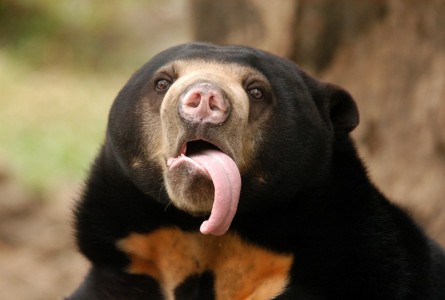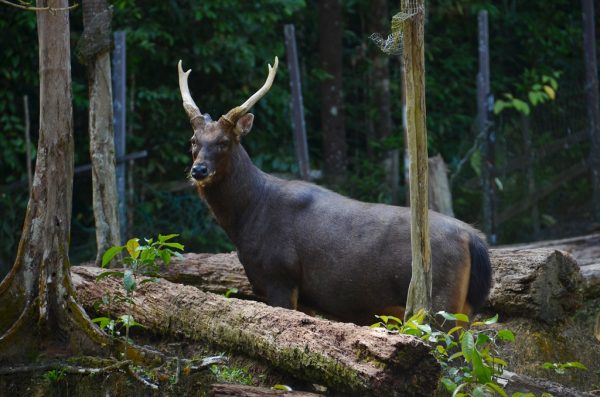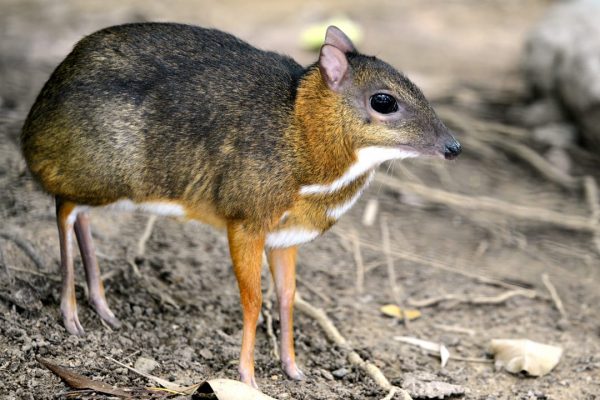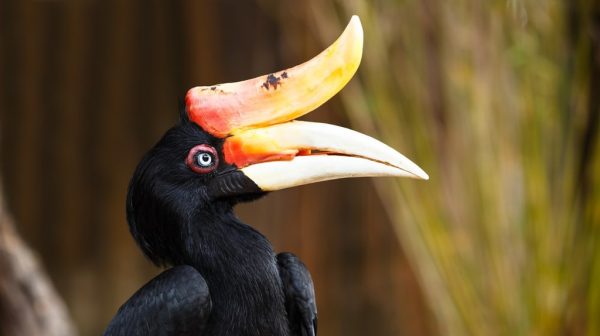Ask any Malaysian what is the first thing that comes to mind when they think of Sarawak and we bet most of them would give you the same answer: Magnificent mountains, wildlife, age-old rainforests, beautiful beaches and colossal caves.
This natural landscape allows for extraordinary biodiversity to exist while nurturing some of the world’s best-kept secrets… Or should we say, creatures? Most people have heard stories about the ubiquitous Hornbill that's emblemetic to Sarawak but what’s out there that maybe you haven’t heard about?
Read on and learn about some of the most exotic and adorable, (OK sometimes!) animals that call our beautiful jungle home. We’ll even tell you where you can find them so you can play your own fun game of “Where’s Waldo?” Malaysian Wildlife edition! Believe us, there is #MoreSarawak than you know!
Horsfield's Tarsier
These adorable little critters look eerily similar to a particular character from Star Wars. If you’re guessing Yoda, you’re right! Except that they don’t talk in riddles or read your minds – their superpower lies in their excellent leaping and climbing skills.
They are nocturnal, but thankfully, their big eyes to help them manoeuvre in the dark. Interesting fact, the size of one eyeball of the Horsfield's Tarsier is the same as their brain. This makes them the largest-eyed mammal in the world relative to their body size!

Photo by Christine Wehrmeier on Unsplash
Don’t be fooled by their cute demeanour, though! They are the only living carnivorous primate species. They feed on insects and small invertebrates, using their sharp sense of hearing and their nifty hands to detect and ensnare their prey.
Where to find them: Mulu National Park
Sun Bear
Even though they’re small, they can be very aggressive so if you see one, don’t mistake it for a cuddly teddy bear! The sun bear is arboreal, so you’ll need to keep your eyes on the trees if you want to see one and you can only see them in our rain forests in Southeast Asia.
They are essential to our ecosystem because they help disperse seeds while also keeping pesky termites in check, which means there is less destruction of our tropical trees which in turn means our atmosphere is clean enough for us to live healthily.
When they do come down from the trees, they also dig for invertebrates in the soil, enhancing the forest’s nutrient cycle through the mixing of rich and poor soil. Unfortunately, their global population has declined 30% over the last few years, making them the second rarest bear species next to the Giant Panda.
iStock: wrangel
Their tongues are up to 25 cm long and help them to satiate their voracious appetite for honey. Because of this, they are also sometimes known as “honey bears”. You can tell the Sun Bear apart from other bear species from the horseshoe marks on their chest. Fun fact: No two markings are the same!
Where to see them: Matang Wildlife Centre
Microhyla Nepenthicola
If that’s too much of a mouthful, you can call it the “Matang narrow-mouthed frog”. That’s only the easy part. Spotting one of these rare creatures in the wild is, well rare! This newly discovered species is the second smallest frog in the world, around the size of a pea, and they make their homes around pitcher plants. They can only be found near Mount Serapi which is located in Kubah National Park.
Source: Reuters
They were discovered after scientists tracked the unique and powerful croaks of the males. Talk about a little body with a big voice! Because they were only discovered recently, not much is known about them. However, if you are lucky enough to spot one, make sure you are wearing ear plugs! Where to find them: Kubah National Park
Sambar Deer
Did you know that the heaviest recorded Sambar Deer weighed an eye watering 550kg?! That’s slightly more than half a ton! So if you do go looking for the Sambar deer, make sure you are wearing running shoes!
Source: Matang Widlife Center
Despite their relatively large stature, these animals are pretty elusive; They are only really active at dusk and at night. When disturbed, their first instinct is to freeze before responding to predators with loud barks and foot stomping.If that isn’t enough to frighten anyone or anything, their mane will rise in a confrontational manner! Imagine this half-a-ton of muscle and jungle survivor towering over you! Like I said, make sure you are wearing running shoes.
Where to find them: Mulu National Park and Matang Wildlife Center
Lesser Mouse Deer
Don’t be fooled by its name! Even though they look like a combination of a mouse and a cute deer, the mouse deer is neither a mouse nor a deer! Confusing I know but you can’t blame us for its name!These shy, mysterious little critters are less than 50cm long and can be found on forest floors feeding on leaves, shoots, fruits and sometimes even fungi. With round bodies and spindly legs, they look almost like plush toys!
Source: critterfacts.com
But while they may look like toys, peek inside a Mouse Deer’s mouth (we don’t recommend you do so), and you’ll find long fangs that give Dracula a run for his money!Despite being land mammals, they can also hold their breath for up to four minutes and to escape prey, they’ll often leap into water and actually scurry across river beds to avoid getting caught! Yes, they can even hold their breath for 4 minutes underwater!Due to their small size, they are commonly preyed upon by other animals, so they have to live quiet and secluded lives. However, a male will angrily beat his hooves when agitated or to ward off predators and warn other Mouse Deer of danger. Where to find them: Lambir Hills National Park
Hornbill
There are so many things to be said about our state mascot. Sporting majestic beaks, Hornbills have impressive neck muscles (to support the weight of their regal bills) and are incredibly loyal to their families. They mate for life and will bond to defend each other against predators!These beautiful feathered creatures also have their own ‘language’ – They speak to each other in a sort of morse code! It’s been said that the noise resembles that of a steam engine. This form of ‘communication’ is especially important and it’s how a male Hornbill sends messages to his mate through the barricade she makes during her nesting period.

Source: Casper1774 Studio/Shutterstock
Hornbills have a great significance in Dayak culture. For them, Hornbills signify the spirit of God, and they have to be treated with respect. It is said that if a Hornbill is sighted flying over their residences, good luck will be granted to the whole community!Altogether there are 54 species of Hornbills in the world, 8 of which are found in Sarawak! No wonder Sarawak is known as the “Land of the Hornbills”.Where to find them: Piasau Nature Reserve, Mulu National Park, Tanjung Datu National Park and Batang Ai National Park
Slow Loris
Tiny, cute, big eyes… But not cuddly! Although they look adorable, these nocturnal creatures are one of the few venomous mammals in the world.
Source: wordatlas.com
Surf the internet long enough and you might recall watching a video of a Slow Loris getting tickled. What many people don’t know is that the pose of the Slow Loris of its arms raised is a defensive pose and not one of enjoyment.Unfortunately, not many people knew this, and when this video gained traction, many people wanted to own Slow Lorises as pets because of how ‘cute’ it looked.As slow lorises are venomous with a potentially deadly bite, their sharp pointed teeth are often clipped with nail cutters without anaesthesia for the pet trade.This makes the pet trade one of the greatest threats to the survival of this species, which places them as vulnerable on the IUCN red list. Here in Sarawak we’re protecting all our Slow Loris as best we can. Have fun looking for them but don’t try and tickle them!
Where to find them: Bako National Park